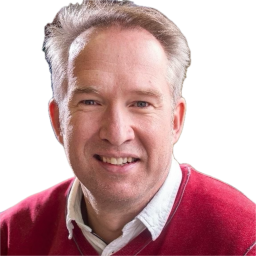Klik op de spreker voor meer info (extract lezing, CV spreker)
Sprekers
KU LEUVEN
Turning Polyolefin Waste into Value
His masterclass (“Turning Polyolefin Waste into Value”) at Laborama will detail how a comprehensive platform of high-throughput characterization techniques - rheology, chromatography, and spectroscopy - can be systematically applied to characterize the complex composition-structure-property relationships in polyolefin recyclates. It will be demonstrated how this methodology facilitates data-driven decision-making and process optimization across both mechanical and chemical polyolefin recycling pathways.
Anton Ginzburg holds MSc in Chemistry from Moscow State University and PhD in Macromolecular Chemistry from the Technical University of Darmstadt. After his doctoral studies, he joined the petrochemical industry, where he helped establish a high-throughput experimentation laboratory integrating polyolefin catalysis with material development to serve various businesses. He later returned to academia and is currently an Assistant Professor in the Department of Chemical Engineering at KU Leuven, where he researches new polymeric materials using accessible building blocks and advanced analytical methods

PROGRAM LEADER AT MATERIA NOVA
Fast & Green: Patented technology for sustainable recycling of PU/PIR foams into high-value polyols for circular applications
Research conducted within Region Wallonia-supported projects (Feder UP-Plastics, Interreg Circoplast) has enabled Materia Nova to develop and validate a patented, solvent-free technology for the fast and sustainable recycling of polyurethane (PU) and polyisocyanurate (PIR) foams. This groundbreaking process depolymerizes rigid or flexible foams in less than 2 min, regardless of their origin (building insulation, automotive components, wind energy systems, or mattresses). It has been successfully applied to both post-consumer construction waste and industrial production scraps, thanks to partnerships with several companies. These results confirm the technological readiness and flexibility of the method. The recovered polyols can be reintegrated into new formulations (at least 30%), as a replacement for fossil-based raw materials. This innovation is aligned with responsible innovation principles and contributes to the circular economy by avoiding landfilling (soil pollution), incineration (toxic emissions), and resource waste. In Belgium alone, 675 000 tons of PU foam waste are produced annually, with only 11% currently recycled. Globally, the figure ranges from 1 to 2 million tons per year. There is an urgent need for efficient, scalable solutions to address this growing environmental challenge. With its speed, efficiency, and ability to handle diverse waste streams, the technology is now ready for large-scale industrial deployment.
This innovation positions Belgium, already known for its expertise in recycling, to become a leader in circular polymer solutions. The technology offers an economically viable, environmentally responsible alternative ready for industrial scaling - at the right moment to meet tightening regulations and rising sustainability demands.
Materia Nova - UMons R&D and innovation center, Polymeric and composite materials (LPCM), Belgium Preparation and submission of project proposals (private/public sector), international collaboration with academic/industrial partners, brainstorming and B2B sessions R&D scientist - project lead in polymer materials science and innovation May’19 - Present Materia Nova - UMons R&D and innovation center, LPCM, Belgium Current R&D projects (2024 - 2025) • smart connected dressings for diabetic wound treatment; • polyurethane foams (bio)degradation (chemical and enzymatic approaches for recycling) (Patent); Past R&D projects (2019 - 2022) • development of saliva-based lateral flow test for malaria diagnosis; • development of biomimetic silicone-based nipples for baby feeding bottles (Patent); • protein extraction and production of protein-loaded technical materials (thermoplastics and rubber); • polymer materials for ultrasound medical imaging (echography devices); • food and flower packaging: biocompatible and biodegradable polymer films; • shape-memory implants (subdural electrode array), antibacterial thermoplastic polyurethane (catheters); • recycled automobile tire rubber valorization thought polymer blending/prototyping by 3D printing; • polymer synthesis, processing and 3D printing (FDM, SLS, SLA and bioprinting).

VUB - SUBSTAINABLE MATERIALS ENGINEERING RESEARCH GROUP
Thermophysical, viscoelastic and mechanical characterization for evaluating reprocessing and recycling
The Materials Characterization core facility of VUB is specialized in the advanced characterization of all classes of materials and their combinations in hybrid materials. A wide range of thermal methods are coupled or complemented by spectroscopic and microscopic methods to study the chemical, thermophysical and mechanical behaviour of materials and relate them to the chemical structure of the studied materials. These quantitative structure-property relations are used to optimize material compositions to maximize their performance in intended applications. Furthermore, the effect of material processing on the chemical structure and resulting properties enables process optimization to maximize product performance and to evaluate the effect of (re)processing and to evaluate recyclability.
Thermogravimetric analysis (TGA) evaluates the thermal stability of materials as a function of temperature and time. Such analyses provide information about the degradation behaviour of materials, presenting a limit to residence times at elevated temperature. Detailed knowledge of the degradation kinetics enable optimization of the (re)processing conditions. Differential scanning calorimetry (DSC) elucidates the thermophysical behaviour of materials, including their heat capacities, glass transitions, melting trajectories and other physical and chemical phenomena that induce a thermal effect. DSC analyses are often confronted with the viscoelastic behaviour that is determined by dynamic mechanical analysis (DMA) and dynamic rheometry (DR), which are more sensitive to solid-solid and solid-liquid transitions, respectively. Structural changes due to continued (re)processing of materials result in measurable changes in the thermophysical (TGA & DSC) and viscoelastic (DMA & DR) behaviour of materials. This lecture will focus on polymeric materials and their composites and blends, while the characterization techniques are universally applicable to all material classes.
Prof. Dr. Ir. Joost Brancart holds a 10% assistant research professor position at Vrije Universiteit Brussel (VUB) and a postdoctoral fellowship from the Fonds Wetenschappelijk Onderzoek (FWO). He is affiliated to the Physical Chemistry and Polymer Science (FYSC) laboratory of the Sustainable Materials Engineering (SUME) research group. He focuses on unravelling the structure-property relations of advanced polymeric materials and exploits these relations to design smart, functional materials for challenging applications. He specializes in reversible network polymerization that can be used to create stimuli-responsive materials and to improve the overall sustainability of polymer networks. His research topics include thermally and photochemically reversible polymer networks, composites, additive manufacturing, and the evaluation and validation of new material technologies in applications such as soft robotics, flexible electronics. This research led to the co-application and co-coordination of 3 EU-funded projects. Currently, he is leading a subgroup of over 15 material scientists and mechanical engineers working on topics related to self-healing soft robotics
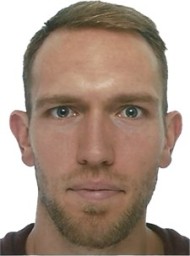
X-RAY SERVICES
Advanced XRF solutions for elemental analysis of complex matrices: calibration-free waste analysis and accurate characterization of Used Cooking Oils via indirect oxygen analysis.
The first part of the presentation focuses on elemental analysis in the waste and recycling industry, which is challenging due to the highly variable composition of samples. Conventional X-ray fluorescence (XRF) methods require matrix-matched calibration standards, which is often unfeasible when dealing with unknown and diverse sample types. SPECTRO’s TurboQuant software offers a powerful solution by enabling semi-quantitative analysis without prior calibration. It uses Compton and Rayleigh scatter data to characterise the matrix and applies the necessary correction factors, making it ideal for applications where quick, accurate screening is needed across a wide range of materials.
Melisa has a background in chemistry, with early practical experience in XRF spectrometry gained through internships focused on WD-XRF and TXRF techniques. After graduation, Melisa worked as an application specialist at AddSPX, the distributor of Rigaku ED- and WD-XRF spectrometers, supporting a wide range of industries with analytical challenges. Later, at Sysmex, Melisa combined sales and application support for Spectro ED-XRF and ICP-OES spectrometers. Since 2024, Melisa has been offering independent, instrument-neutral support to laboratories through X-Ray Services, specializing in XRF and related spectroscopic techniques.

UNIVERSITY OF ANTWERP, DEPARTMENT OF BIOCHEMICAL AND CHEMICAL TECHNOLOGY
Renaissance of plastics analysis driven by increased circularity.
Advanced characterization techniques for polymer and plastic materials have always been in support of optimizing application performance, and assist novel design features. However, plastic formulations have become increasingly complex, although the desire for a circular economy has become more prominent. As full circularity can only be achieved by recreating virgin-grade resins, control and refining of the feedstock becomes imperative. This also implies establishing new analysis protocols, as several materials, such as polyurethanes or rubbers, have traditionally only seldomly been analyzed for compositional diversity, since system houses already know their own formulations. Furthermore, creative design-for-recycling strategies such as chemical labeling are under development, requiring new in-line sorting units in the future. Finally, the emergence of AI models creates vast opportunities to connect analytical assets to chemical know-how and circular plastics schemes.
Pieter Billen is chemical engineer and is professor of chemical engineering at the University of Antwerp, where he leads the iPRACS (intelligence in processes, advanced catalysts and solvents) research group at the Faculty of Applied Engineering. He teaches introduction to chemistry, instrumental analysis, and coordinates an entrepreneurship program for engineering students. In his research, he is debottlenecking the transition to a circular economy for complex organic materials, bridging molecular-scale modeling and experiments to process and value chain designs. The research group is a collaboration between three professors, three postdocs, ten doctoral students, and two support staff members.
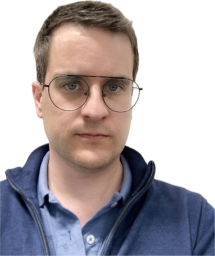
X-RAY SERVICES
Advanced XRF solutions for elemental analysis of complex matrices: calibration-free waste analysis and accurate characterization of Used Cooking Oils via indirect oxygen analysis.
The second part of the presentation focuses on the elemental analysis of used cooking oil (UCO), a key feedstock in the production of biodiesel. UCOs often contain significant and variable amounts of oxygen, which can heavily influence XRF results due to matrix effects. Traditional XRF analysis requires calibration with standards that match the sample’s matrix, including its oxygen content, making accurate quantification challenging when the oxygen content is unknown or fluctuates.
To overcome this, a dedicated application was developed for the SPECTRO XEPOS, enabling the indirect determination of oxygen content using backscatter (Compton) signals. This technique allows the instrument to automatically correct for matrix effects caused by oxygen, without requiring prior knowledge of the sample composition. As a result, the XEPOS can accurately measure sulphur and trace elements in UCOs and FAME-based fuels, ensuring compliance with regulations and helping distinguish bio-based materials from mineral oil derivatives.
Mario began his career at Sadaci, a company specializing in molybdenum ore conversion, where he was responsible for Atomic Absorption, WD-XRF, and the implementation of an ISO 9001 Quality system. In 1993, he joined the research facility of Texaco Ghent (later Chevron), focusing on elemental analysis using techniques such as WD- and ED-XRF, ICP, DCP, AAS, and others. His work involved the installation of new equipment, development of novel test methods, and fundamental research to solve practical problems. During this period, Mario presented his findings at various international conferences and represented Belgium in the CEN TC19 WG27 working group on ISO norms for low sulfur automotive fuels. Over time, Mario’s role expanded to include lab automation and global affiliate support, fostering close collaboration with instrument suppliers to optimize equipment for petrochemical applications. In 2000, he founded X-Ray Services, initially alongside his work at Chevron. Since 2008, he has been a full-time consultant, providing on-site training, calibrations, and independent advice to laboratories—primarily in the petrochemical and automotive sectors. Mario also consults for XRF and ICP-OES instrument suppliers to enhance hardware, software, and explore new applications. He performs Master Calibrations for several major XRF and ICP-OES manufacturers and has developed a broad range of test consumables and certified calibration standards compliant with ASTM, ISO, IP, and DIN methods.
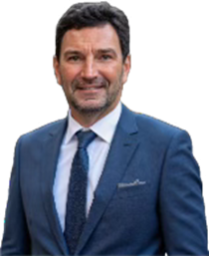
RECUPEL VZW
The importance of a proper disposal and recycling of electronic laboratory and medical equipment.
Electronic equipment plays a crucial role in the laboratory and medical sector. But what happens to these devices when they take their last breath?
Unfortunately, they are not always recycled in the right way. This is a missed opportunity because many of these instruments contain material and components that can be perfectly reused. At the same time, they can carry risks if processed incorrectly. The European goal is to effectively recycle 65% of all electronic equipment placed on the market.
CV speaker
- Professionel Carreer Chief Sales & Marketing Officer, Analis sa, Namur 2014 – 2019
- CEO, Analis Development sa, Namur 2019 – 2021
- Freelance Business Developer, start-up Toolsquare, Antwerp 2022
- Freelance Business Developer, Recupel vzw, Brussels 2023 – present
- Present Co-founder Brewery Swiekes bv, Oud-Turnhout 2020 – present

UMICORE CORPORATE R&D
The Role of Analytics and Characterization in Umicore's Recycling
Umicore's recycling processes are strongly linked to robust framework of analytics and characterization techniques: from laboratory analyses to real-time chemistry monitoring. Our laboratory-based analytics provide detailed and essential information on composition of input, intermediate and final products. Meanwhile, at-line and on-line process analytics ensure real-time optimization of our recycling operations. Additionally, advanced characterization methods further reveal structure and properties of materials involved in recycling. This integrated analytical approach drives efficiency, supports quality control and contributes to Umicore’s sustainable practices. Further innovation in the field of analytics is driving the success of recycling at Umicore and is crucial to the success and continued progress of our recycling efforts. Join me in this session to explore Umicore’s current analytical flow and to learn about current analytical challenges and needs in recycling streams.
Dr. Margarita Merkulova holds a PhD in geochemistry, obtained at the University Grenoble Alpes (France). She has a background in geochemical and material science, in which she applied advanced analytical tools, like X-ray absorption spectroscopy, electron microscopy, X-ray diffraction and others. Since 2021 Dr. Merkulova is a program manager in analytics at R&D team of Umicore, where she contributes to projects specialized in precious metal and battery recycling. In her current role Margarita addresses analytical and material characterization challenges of research projects by employing combination of innovative approaches and conventional analytical methods.
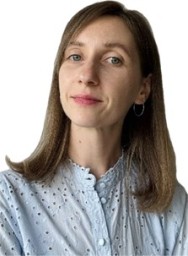
UGENT - POSTDOCTORAL ASSISTANT LABORATORY FOR CHEMICAL TECHNOLOGY (LCT)
Plastics to Chemicals: Unlocking Circularity Through Advanced Analytics
Advancing circularity in plastics-to-chemicals conversion requires a deep understanding of pyrolysis oil composition and behavior. This presentation highlights the use of comprehensive two-dimensional gas chromatography (GC×GC) for detailed characterization of pyrolysis oils, and evaluates their performance in steam cracking. By linking molecular-level analytics to process outcomes, we demonstrate how advanced techniques can guide feedstock optimization and improve the yield of high-value chemical products.
About: My research journey began with a strong foundation in mechanical and combustion engineering, culminating in a PhD at IIT Bombay, where I developed novel techniques for measuring laminar burning velocities under extreme conditions. Transitioning into sustainable chemical technologies, I now focus on catalytic pyrolysis of plastic waste, circular process design, and low-carbon technologies at Ghent University. My future vision is to integrate advanced reactor engineering with data-driven modeling to accelerate the transition to renewable chemical processes
- Collaborates with interdisciplinary teams to develop sustainable energy and waste valorization technologies.
- Specializes in advanced analytical techniques, including comprehensive GC × GC-FID/SCD/AED/NCD and TOF-MS for product characterization.
- Contributed to multiple high-impact publications in the field of analytical pyrolysis, chemical kinetics and clean energy conversion.

UNIVERSITEIT GENT
Bringing thermosets in the circular economy: mission impossible?
Dynamic covalent chemistry (DCC) allows the development of thermally (re)processable and recyclable polymer networks, which is a highly attractive feature for new generations of thermoset materials and composite materials.However, despite a huge surge in academic interest where soon almost any imaginable DCC platform may have been applied in a thermoset formulation, dynamic or reversible covalent polymer networks have so far found only few industrial applications. This lecture will provide a perspective on the main strategies for the application of DCC in the design and development of bulk thermoset materials and presents some of the key hurdles for their industrial implementation. The polymer design strategies and associated chemistries will be placed into the perspective of how ‘close to market’ their development pathway is, thus providing a roadmap to achieve high-volume breakthrough applications. Besides a general outline, this presentation will highlight a number of our actual research efforts to overcome remaining limitations for the industrial implementation of this new generation of reprocessable thermoset materials, mainly based on smart chemical design.1-10.
Filip Du Prez finished his PhD research in 1996 with Prof. Eric Goethals as his promotor. After research stays in Lehigh University (USA) and Montpellier (France), he became head of the Polymer Chemistry Research group of Ghent University in Belgium with around 20 researchers focusing on three main topics: 1) ‘Sequence defined polymers; 2) ‘Dynamic and circular thermoset materials’; 3) ‘Giving renewable polymers functionality’. In 2021, he received a prestigious ERC advanced grant from the European commission for his research. He published around 350 reviewed publications, more than 10 book chapters, 15 patent applications and more than 25 awards for his coworkers in the last 5 years. Since 2018, he is associate editor for the RSC-journal Polymer Chemistry. In 2021 he became RSC fellow and since 2023, he is member of the Royal Academy of Belgium for Sciences and Arts.
